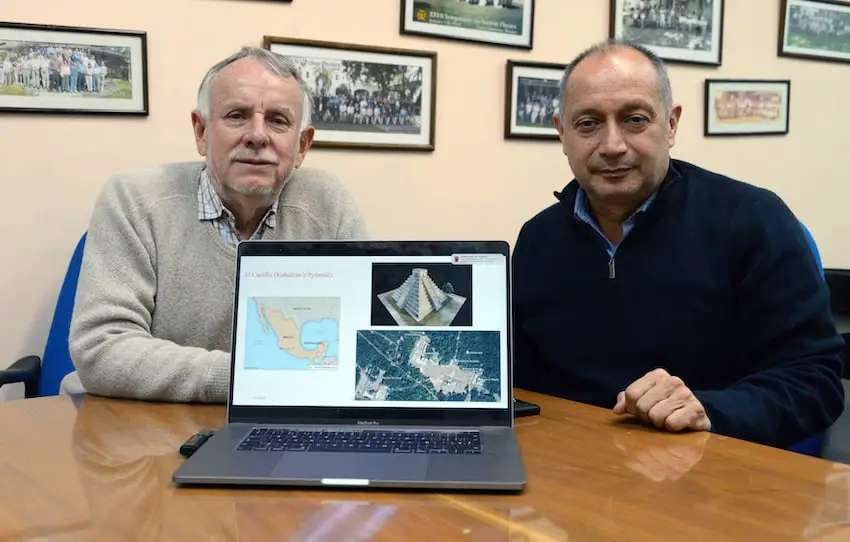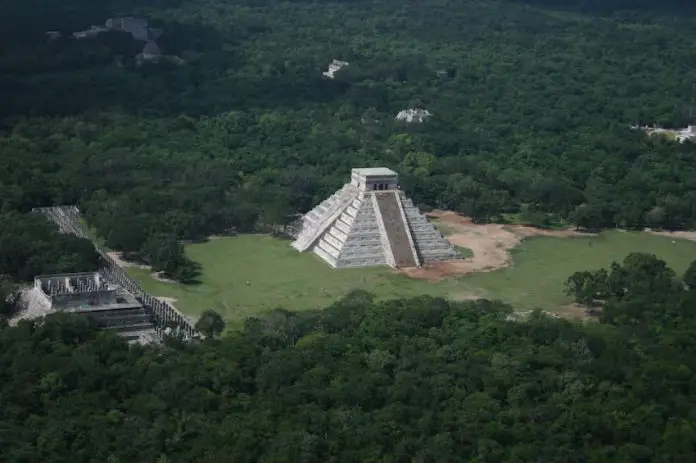A group of international scientists — including academics from Mexico’s National Autonomous University (UNAM) — will use cutting-edge technology to search for hidden chambers inside the iconic ancient pyramid of Chichén Itzá.
The target of this investigation is “El Castillo,” a 30-meter high stepped pyramid that dominates the Chichén Itzá archaeological site in the state of Yucatán and that is also known as the Temple of Kulkulcán.

The study, which is set to take place this summer, will rely on a non-invasive process that uses cosmic-ray muon radiography to peer inside sealed off structures. The process, known as Non-Invasive Archaeometry Using Muons (NAUM), was used to get a clear image of a 30-foot corridor inside Egypt’s Great Pyramid of Giza last year.
The investigators — led by Arturo Menchaca Rocha, a former head of UNAM’s Institute of Physics, and Edmundo García Solis of Chicago State University — aim to get an accurate image of the inside of the pyramid in order to determine if there are secret chambers hidden inside the sub-structure.
Scientists will first map out the two known chambers inside “El Castillo” — known as “El Jaguar” and “Chac Mool” — to confirm the viability of the NAUM system. They will then proceed to produce a detailed examination of the entire pyramid.
The process is expected to take about six months.
What is muography?
Muography is a rapidly developing and non-destructive technology that uses cosmic ray muons, naturally occurring radiation from space. It tracks the number of muons that naturally pass through a target object to determine the density of the inaccessible internal structure.
The muon is one of the fundamental subatomic particles, the most basic building blocks of the universe.
García explained that muons are charged particles similar to electrons but that weigh more than 207 times as much. Due to their greater mass, they can penetrate deeper into matter when charged with energy.
In a bulletin, UNAM explained that the investigators will be using a detector with plastic scintillator sensors that convert energy into pulses of light, with results relayed to researchers via the internet.

The data gathered will help the investigators identify changes in density inside the pyramid which can produce a pattern indicating a void.
This technique was previously used to explore the famed Pyramid of the Sun in Teotihuacán.
Who is funding the study?
The investigation was approved by Mexico’s National Institute of Anthropology and History (INAH),with funding from UNAM and the United States’ National Science Foundation.
Academics from the University of Virginia and Dominican University are also participating in the study, as is Fermilab, a particle physics and accelerator laboratory in the United States.
With reports from El Economista and La Jornada Maya
